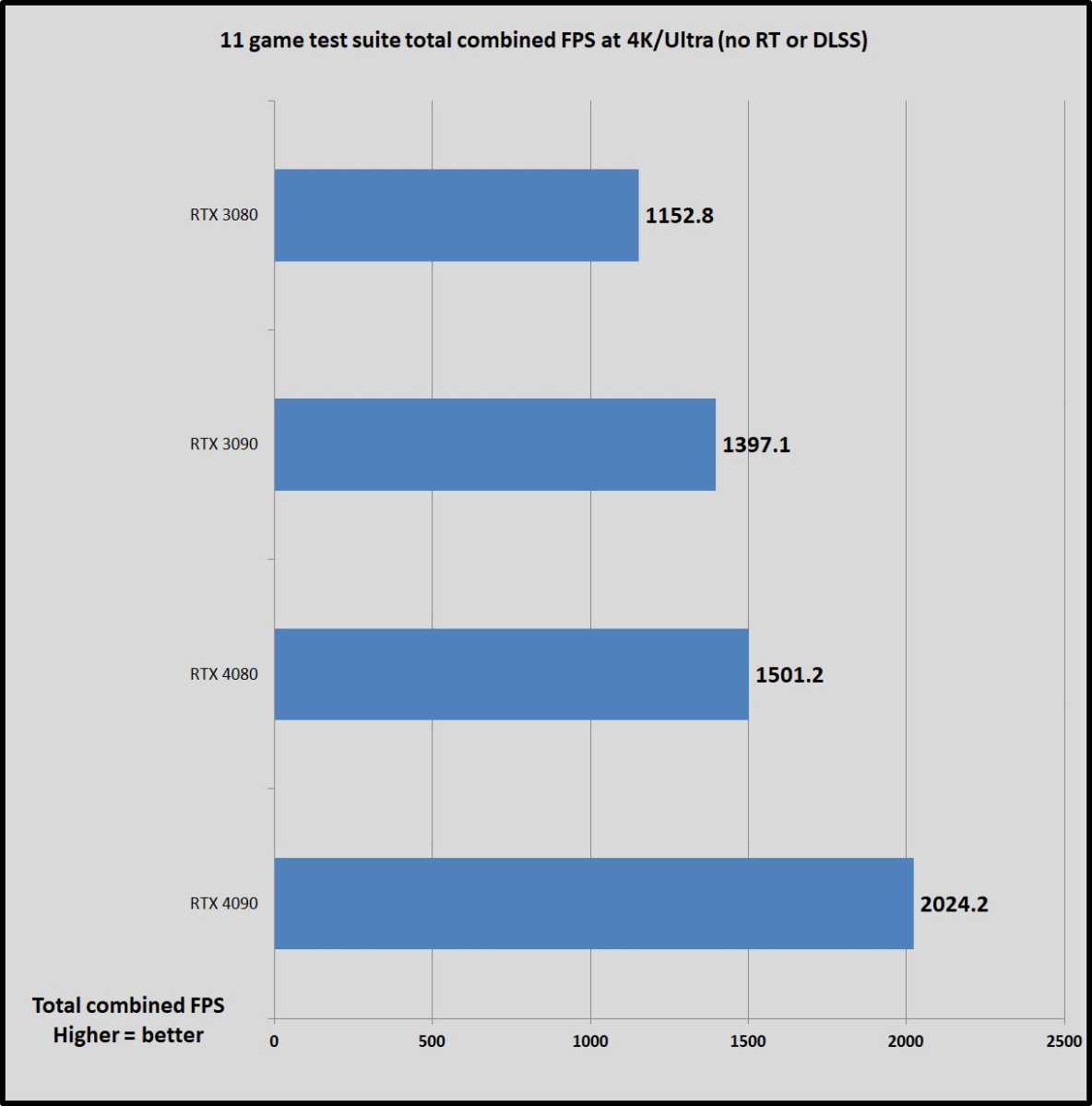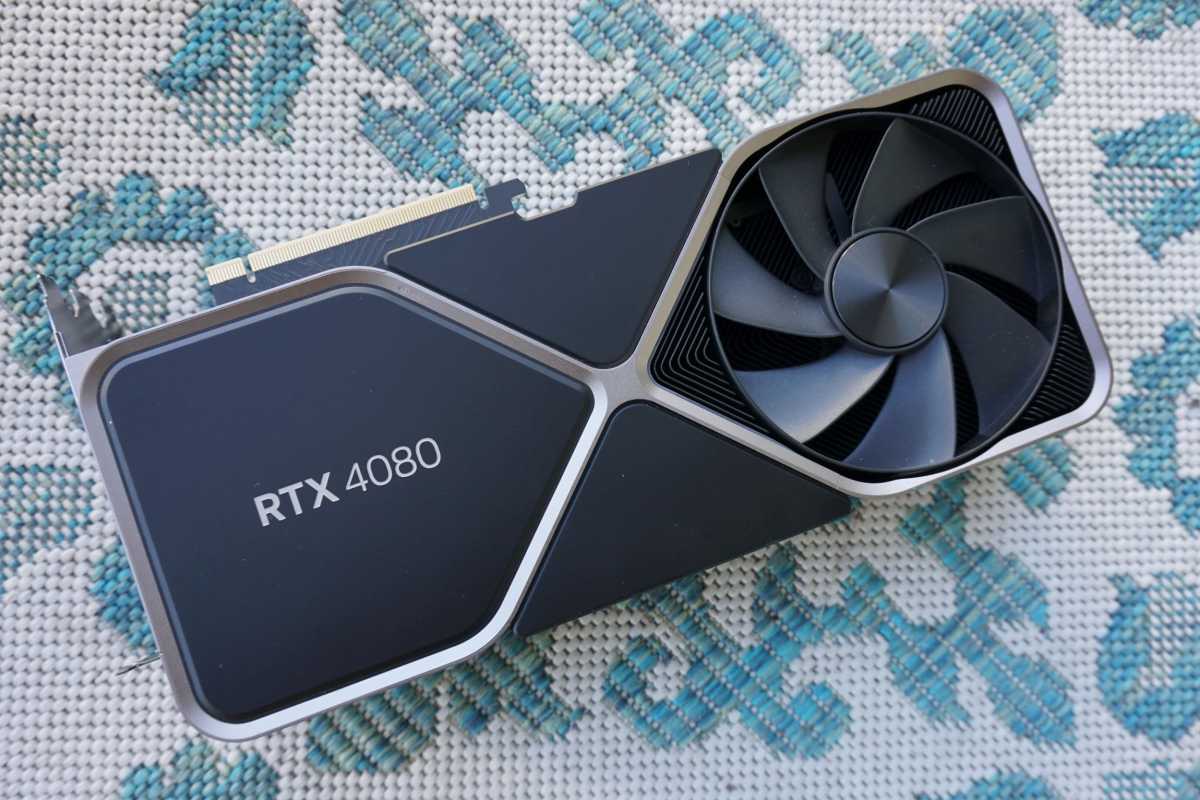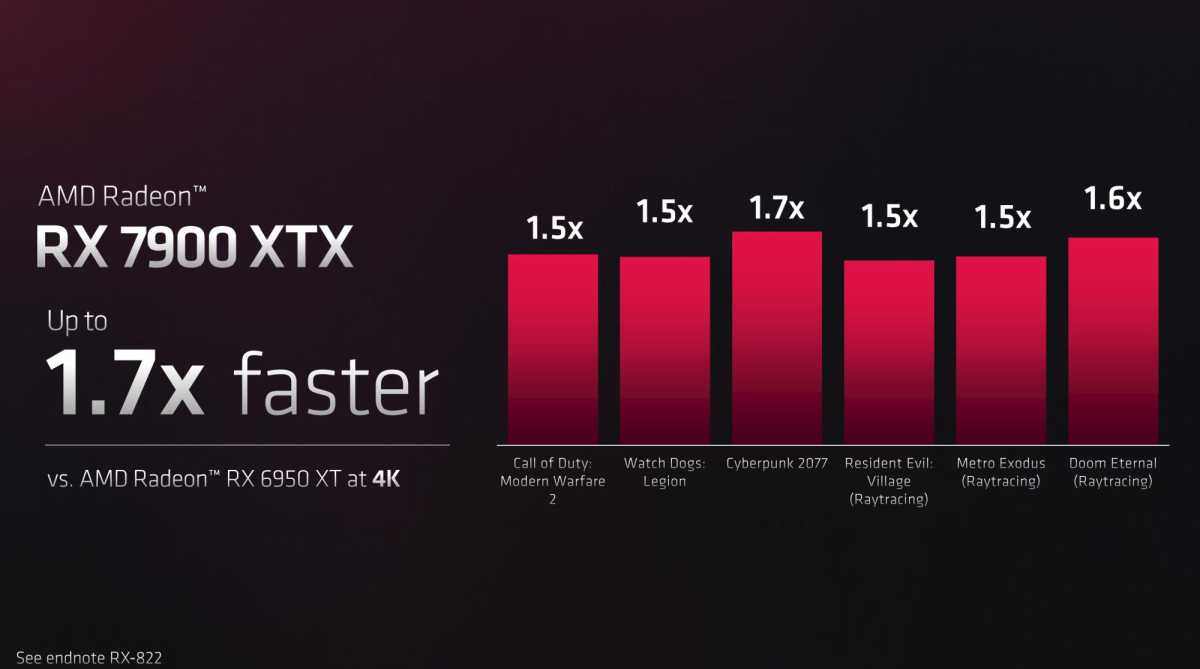Nvidia’s new GeForce RTX 4080 Founders Edition hits stores tomorrow, lightning-fast performance and a massive new price tag in tow. While last generation’s awesome RTX 3080 cost $700 at launch, delivering a monument 60 to 80 percent performance uplift over its predecessor, this new model is releasing with a staggering $1,200 price tag. Yes, that’s right: a $500 (or 71 percent) increase over the cost of its predecessor. For roughly 30 percent more performance.
Sheesh. We’ve been putting the GeForce RTX 4080 through its paces and while Nvidia’s new GPU is plenty fast, blowing past last gen’s RTX 3090, that new price tag casts a long shadow over its release, to such an extent that we can’t even come close to recommending this card at this aggressively insulting price. Look for our comprehensive RTX 4080 gaming performance review to land in the coming days. Today, here’s a high-level look at what you need to know before dropping $1,200 (or, ideally, not) on one of these beasts.
1: The GeForce RTX 4080 chews through games
There’s no denying that the GeForce RTX 4080 is fast. Averaged across our 11-game testing suite—running a variety of graphics APIs, game engines, and game types—the GeForce RTX 4080 winds up about 7.5 percent faster than the vaunted RTX 3090, and 30.3 percent faster than the RTX 3080 (though exact performance uplift can vary wildly depending on the game). Unlike last generation’s cards, it has no problem hitting the hallowed 60 frames per second mark at 4K resolution with all the eye candy cranked, even in tough titles like Cyberpunk 2077.

Brad Chacos/IDG
The same holds true for ray-traced and DLSS-enhanced games. As we saw with the $1,600 GeForce RTX 4090, Nvidia’s new “Ada Lovelace” architecture seriously stepped up the quality of its dedicated ray tracing and tensor cores to deliver unparalleled performance in these cutting-edge games—especially in the handful of titles that support DLSS 3’s Frame Generation feature, which adds AI-generated visuals every other frame to supercharge visual speeds (but not necessarily responsiveness, because those AI frames don’t respond to your inputs like a normal frame would). At 1440p in F1 22, the RTX 4080 hits 118fps with standard DLSS 2 on and ray tracing active, and a whopping 234fps with DLSS 3 FG enabled!
2: The GeForce RTX 4080 chews through content creation
If you use your graphics card for work as well as play, you’ll like what’s on offer here—maybe. Adam “EposVox” Taylor, the internet’s stream professor, already tested the RTX 4080’s workstation chops in a gauntlet of content creation benchmarks. Bottom line? The huge performance benefits he first witnessed in the RTX 4090 still hold true here, with the RTX 4080 (usually) smoking its last-gen predecessors in streaming, editing, AI art generation, and more.
But there’s a catch: The RTX 4080 only comes with 16GB of onboard VRAM. That’s plenty for gaming, of course, but EposVox found it wanting for serious video editors. Check out his full eval for dozens upon dozens of benchmarks, but here’s the key excerpt on why you may want to spend up for a 4090’s 24GB capacity or wait for a cheaper RTX 40-series option instead:
“Throwing the card in my Threadripper Pro build to text my intense 8K project full of 8K RAW footage, Resolve SuperScaled 4K footage, plugins and effects… unfortunately the 4080 couldn’t export this, just like the previous 80-tier cards I tested. 16GB of VRAM still isn’t enough, I suppose—plugins error out, color graded footage takes longer than the 4090, and so on. 8K is tough, but for $1,200 I would hope at this point to start to see higher VRAM capacities when Intel is handing out $350 Arc graphics cards with 16GB.”
3: It’s huge
One of the perks of Nvidia’s RTX 3080 Founders Edition was its size. Virtually all custom 3080 boards by the likes of EVGA, Asus, MSI, et cetera were massive three- or four-slot cards that required lots of room in your PC case. The RTX 3080 Founders Edition stood out by being a standard two-slot card that fit into virtually any system, and it looked damned good doing it thanks to Nvidia’s stunning industrial design. Yay!

Brad Chacos/IDG
Not so with the RTX 4080 Founders Edition. Nvidia decided to give the RTX 4080 FE the same humongous triple-slot cooler as the RTX 4090 this time around, which means it’ll slip into far fewer systems. It’s a bit of a perplexing design choice, since the more efficient Lovelace-based RTX 4080 actually draws less power than the RTX 3080 FE under full load in our tests. Nvidia could’ve chosen a much cheaper, more manageable two-slot design yet again, I suspect—though having a huge, silent, and frigid three-slot cooler might help make you feel better about dropping $1,200 on this card I guess?
4: It uses a controversial (and ugly) power adapter
Similarly, the GeForce RTX 4080 also joins the RTX 4090 in using a new power adapter designed to connect its new-breed 12VHPWR power port to three standard 8-pin power connectors. I think these short-cabled adapters are fugly in your case, but they’re nothing new—last-gen RTX 30-series Founders Edition cards also shipped with slightly different 12-pin adapters. What is new are dozens of reports of melting 12VHPWR adapters on the RTX 4090. Yikes.
This isn’t anything I’d personally worry about. I’ve had no problems with my 4080 or 4090 FE, and a few dozen incidents over presumably tens (hundreds?) of thousands of RTX 4090 sales indicates a clear problem, but not a pervasive one. And despite extensive testing, GamersNexus and Igor’s Labs have been unable to replicate the melted cables seen by a handful of new RTX 4090 owners. Hopefully Nvidia figures out the root cause, and it’s limited to a bad batch of cables or connectors on 4090s alone.
But here, it’s another potential point of concern in a product full of tiny concerns. And a $1,200 graphics cards really shouldn’t stress you out. Which brings us to the main point.
5: The GeForce RTX 4080 costs waaaaaaaay too much
In no world should you pay $1,200 for the RTX 4080. And I suspect Nvidia wants exactly that.
Our full benchmark results won’t be posted until our final RTX 4080 review launches in the next day or two—a burst pipe in the middle of the night foiled my release-day ambitions—but at a high level, it’s about 30 percent faster than the RTX 3080 at 4K resolution with settings maxed out and ray tracing/DLSS off. That’s a solid, if unspectacular generational jump (the RTX 4090’s 55 to 83 percent leap over the 3090 was much more impressive, as was the 3080 vs. 2080), the sort you’d expect to see in the same class moving from one gen to the next. But that’s at the same price.
Again, Nvidia is asking for 71 percent more cash for that mere 30 percent uplift—$699 versus $1,199. At the same $1,199 price, the RTX 4080 is only faster than the RTX 3080 Ti by single-digit percentages. That’s absolutely insane and aggressively insulting to PC gamers. You should stay far, far away from this graphics card at this price.
There are wider economic reasons why Nvidia probably priced the RTX 4080 this way. The RTX 4090 remains a great option even at $1,600; it can max out a high-refresh rate 4K monitor and chew through content creation tasks without breaking a sweat, something no other GPU can claim, for just $100 more than the RTX 3090’s launch MSRP. It’s pricey, but good.
The RTX 4080 is pricey but does nothing to justify its downright ludicrous cost. It does, however, manage to make both the RTX 4090 and the piles of older RTX 30-series cards look somewhat more reasonable thanks to the psychology of price anchoring. Nvidia and its partners are sitting on a massive stockpile of RTX 30-series GPUs after the cryptocurrency market crashed, and sunk demand for ultra-marked-up GPUs alongside it. Consider the RTX 3080: No one would expect to pay anywhere near its MSRP of $700 more than two years after its launch. But that’s where we’re at right now, and next to the $1,200 RTX 4080, it might look like a bargain, because the RTX 4080 is 71 percent more. Nvidia is keeping both these generations alive side-by-side for a reason.
When Nvidia CEO Jensen Huang spoke to reporters after revealing Lovelace at GTC 2022, he said, “The idea that a chip is going to go down in cost over time, unfortunately, is a story of the past.” But AMD just revealed its next-gen “RDNA 3” Radeon GPUs and yes, they cost less than their predecessors. The Radeon RX 7900 XTX costs $999, compared to a $1,100 MSRP for the Radeon RX 6950 XT; the Radeon RX 7900 XT costs $899, compared to $999 for the Radeon RX 6900 XT (though the 7900 XT may have more in common with last-gen’s 6800 XT).
We’ll have to see where performance falls when AMD’s cards launch on December 13, but if the Radeon RX 7900 XTX manages to hit the 1.5x to 1.7x uplift (via 6950 XT) that Radeon claims, Team Red’s offering could very well wind up just behind the RTX 4090 and as fast or faster than the RTX 4080 for hundreds of dollars less.

Take all vendor-supplied benchmarks with a big handful of salt, but if the Radeon RX 7900 XTX is indeed more than 1.5x faster than the 6950 XT, it could wind up faster than the 4080 in traditional games for hundreds less.
AMD
Don’t be a sucker and pay $1,200 for this card. Don’t be a sucker and buy a 2-year-old last-gen model at full price. Either buy an RTX 4090 if you want no-compromises gaming and creation performance—or wait to see what Radeon offers this time around, or wait for Nvidia’s prices to potentially fall after it sells through that mountain of older RTX 30-series cards. Because a 71 percent (71 percent) price increase for a 30 percent performance increase ain’t it. That’s harsh, but it’s true.
Stay tuned for our full gaming review soon. In the meantime, check out Adam Taylor’s insanely detailed evaluation of the GeForce RTX 4080’s content creation chops.
Stay connected with us on social media platform for instant update click here to join our Twitter, & Facebook
We are now on Telegram. Click here to join our channel (@TechiUpdate) and stay updated with the latest Technology headlines.
For all the latest Technology News Click Here
For the latest news and updates, follow us on Google News.
